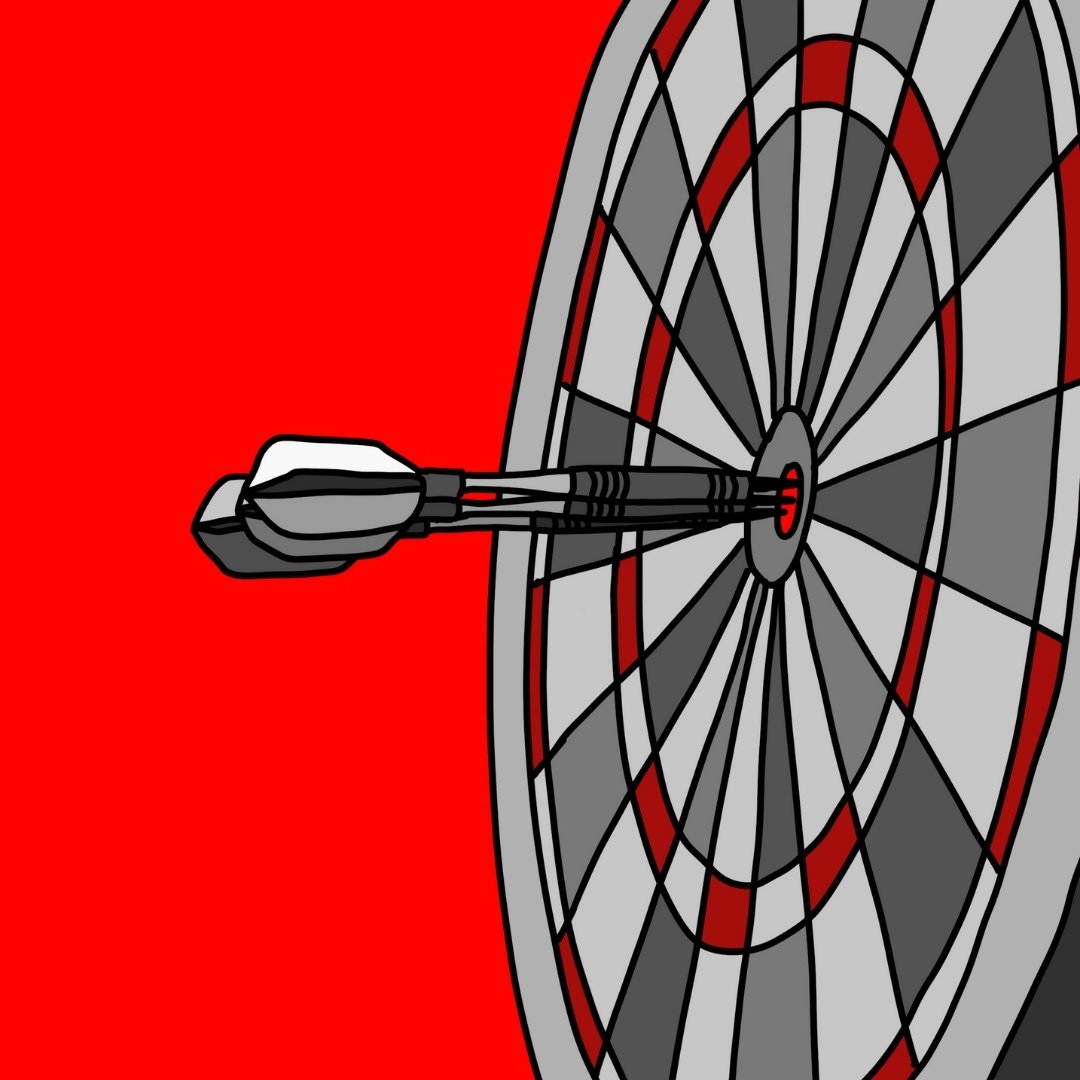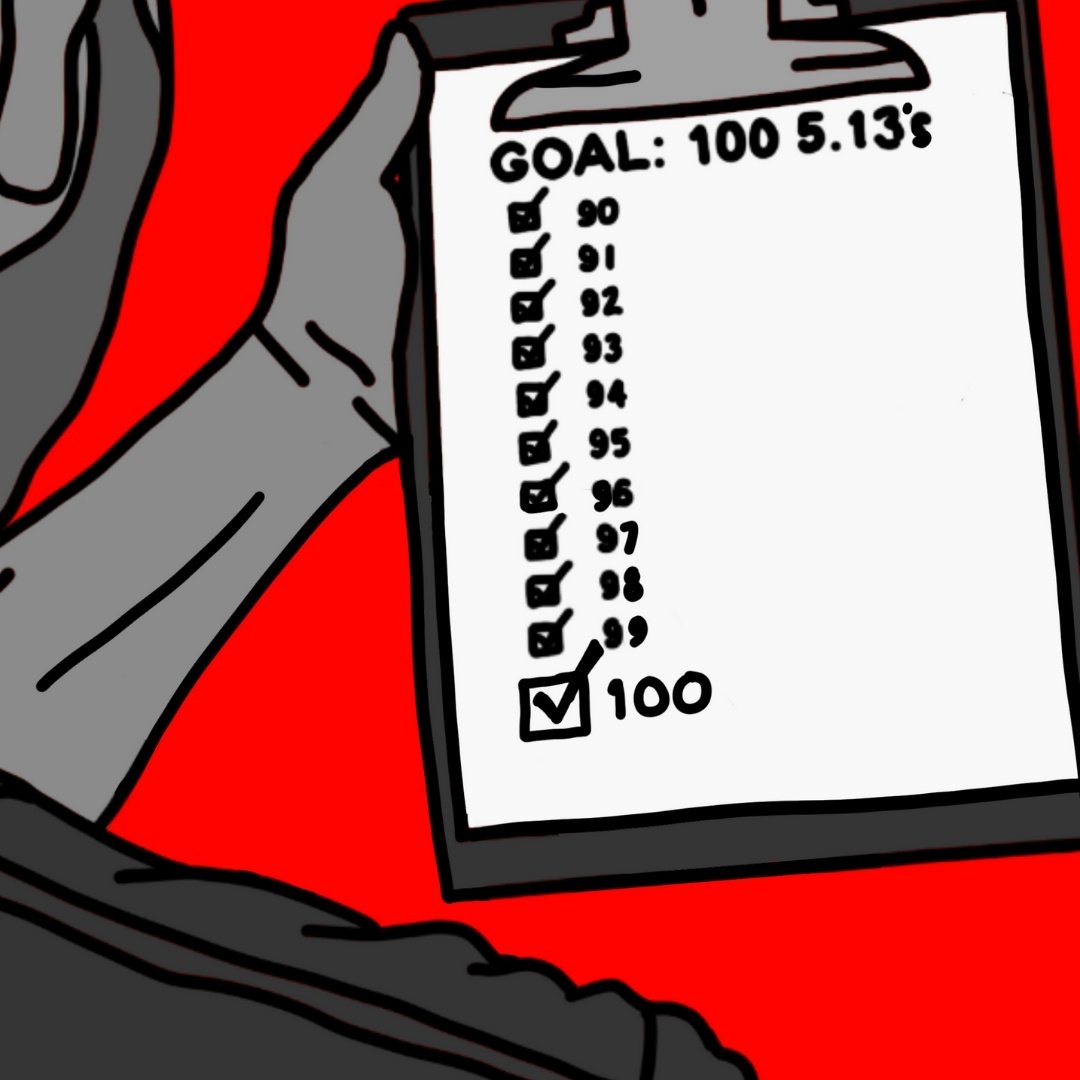Your Goals Are Decisions
I can’t possibly tell you how many podcasts and YouTube videos I’ve consumed on all things goals over the past few months. Too many. Most are just regurgitations of the same concepts, but occasionally I come across one that makes my thinking go in an entirely unexpected direction.
With pages of notes, I thought that I was ready to start diving in and connecting dots and theorizing. Then I watched this video on the concept of range as essentially being less of a specialist (as popularized by David Epstein in his book) that flipped the way I was approaching goal setting.
In the video, Michael MacKelvie uses the phrase “explore versus exploit.” I had never heard this but understood the concept immediately, and of course, instantly connected it to climbing. I did some Googling because I suspected he hadn’t just invented this idea. Often called the “exploration - exploitation dilemma” or the “exploration - exploitation tradeoff,” it’s a fundamental concept in the world of decision making.
At the concept’s essence, exploitation means choosing what appears to be the best option based on current knowledge (which may be incomplete or misleading), while exploration means trying out new options (which may eventually lead to better outcomes), but is undertaken at the expense of an exploitation opportunity.
In climbing terms, do you explore a new style of climbing, knowing that you will become more adaptable, or do you zero in on the style, rock type, and area you are already well-versed in?
Obviously, the best answer is to do some of both, which I think we often do simply because of climbing having so many variables. But with some intention, can we do better?
Yes, of course we can. And if, when goal setting, this is where we begin, with intentional setting of both exploration and exploitation goals, then we’re already off to a better start than the average method of choosing a random climb or simply the next grade up.
Goals are, after all, decisions. If they aren’t, you’ve already missed the point.
I was recently talking to a friend and long-time client, and suggested that he consider making some “adaptation goals” for the summer. Conditions wouldn’t be good – it’s humid in the midwest – but could he climb V8 in those conditions? Could he go out there with the intention of trying something below his top level when it would feel much harder than it should? And what are the potential ramifications of that? He’ll lose some skin, but it might help to reframe difficulty and effort in a way that helps when the good conditions arrive.
With this new construct in mind, I think adaptation goals are a category of exploration goals, which led me to wonder what the other categories might be – of both exploration and exploitation.
And is exploitation even the right word? It can carry a negative connotation, though by strict definition, it’s not inherently negative.
At any rate, coming to this realization meant changing my starting line. So my very meta current goal, for my deep dive into goals, is to figure out the categories of both types of goals.
This might end up being deeper than I expected, though I suspect that once I’ve sorted out the most useful categories for climbers, the rest of this will move much faster. The science of goal-setting and achieving is actually fairly solid, including some fairly recent studies that contradict a long-held belief that I had always had a hard time buying into.
Yes, I’m biased. Of course I am, I’m human.
After Goals, Mental Training.
Because we eventually want to create a resource that climbers can use to assess and improve all four of the pillars of climbing performance – Technical (which we addressed with the Atomic Elements of Climbing Movement course), Tactical, Physical, and Mental – I’ve recently met up with Josie McKee from Mind Athlete to start working on clearly defining how climbers consider mental training. Josie has been on the podcast a few times and she also wrote a great blog post for our site about exploring discomfort in climbing.
I’ve always enjoyed having these conversations with her and I appreciate the curiosity she brings to them, and I suspected that she’d be game to interrogate the constructs we’ve simply accepted when it comes to climbing mindset work. I wasn’t wrong.
It wasn’t long after our initial conversation that we sat down and recorded a chat about her ideas for a similar “Elements” approach to mental training. I came in ready to poke a bunch of holes in her ideas, but I simply couldn’t. She’s on to something exciting that seems to me like it will be just as useful as the movement course, and will provide lightbulb moments for so many climbers who haven’t quite connected with what’s currently out there.
Soon we’ll likely have a few questions that we’d love for everyone to give some feedback on, so stay tuned for that in your inbox over the next few weeks.
On a recent trip to Las Vegas to see Tyler the Creator with my daughter, I set myself a goal. I would only have a few hours one morning to climb, so I had two options: I could choose something I knew I could do like a V7/8 or lower, or I could choose something hard and potentially walk away empty-handed.
I wanted the pressure of something hard. There’s a V10 on a boulder I already knew how to get to and knew I would need minimal pads for, so I zeroed in on that. With my daughter spotting, I was able to get it done in a two-hour car-to-car session. Not my fastest V10, but also not bad for my first time bouldering in my 50’s.
See you in a month or so.
– Kris
Related Things to Stay Current:
Nate and I just finished a series of podcast episodes based around the question “Do coaches need to be good climbers?” Across five episodes we did our best to answer this question, to break down what coaches should be considering in terms of climbing, coaching and training experience, as well as what book knowledge they should have. Not to mention, what does good even mean? You can find those at our Patreon or by subscribing in Apple Podcasts.
We just had our best month ever on YouTube! Partly due to the success of this video about sport climbing plateaus, which is a great companion to the Atomic Elements course. We just released a bouldering version, too, so if you’re feeling stuck on a bouldering plateau, it’s made just for you.
This week is the beginning of a month of episodes on Written in Stone, my climbing history podcast, that will celebrate the women of the 1980s. The written history on many of these women is few and far between, so I hope to tell some of their story and shine a light on the foundation they built for the women who are crushing things today.
Also on Written in Stone, we are giving away three hoodies from our awesome sponsor, Rab! To enter the giveaway, you just have to become a Patron for the show and like the post.
Don’t forget! If you aren’t on the email list for The Current, you won’t get the email next month. Make sure you’re subscribed HERE.














